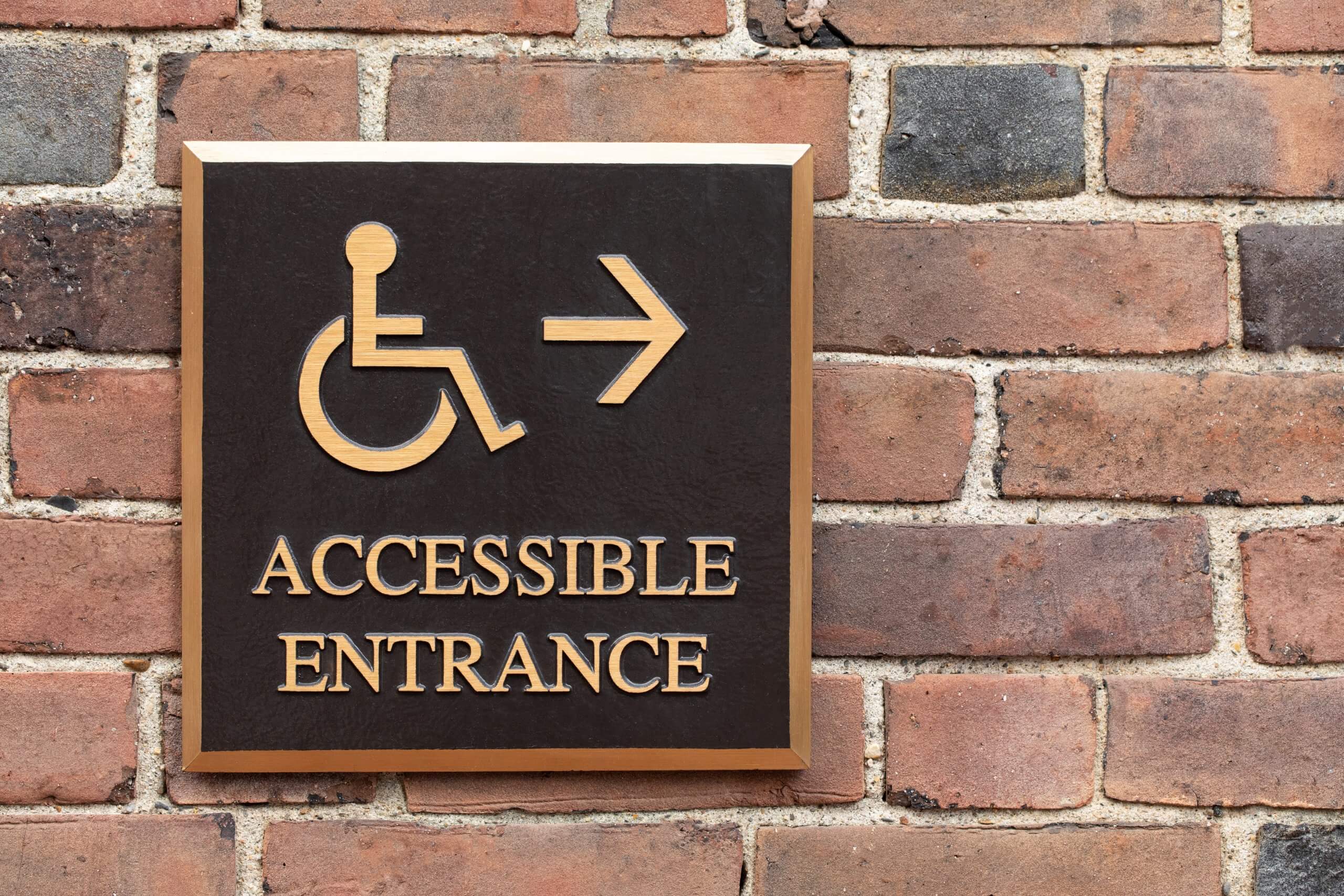
Every business has the responsibility to provide accessible facilities to everyone who uses their building for any reason. It’s not just the law; it’s the right thing to do. To do this, you have to ensure that your office door is ADA compliant.
Do you need to install double doors to ensure that your entryways and interior doors are wheelchair accessible? Not necessarily. Both single and double doors can be ADA compliant.
The Americans with Disabilities Act mandates that facilities must be accessible. As part of that, there are published design standards for businesses. These include requirements for both interior and exterior doors. Fortunately, CDF Distributors offers all of the door accessories and components you need to be ADA compliant.
According to the ADA, at least 60% of the entrances in a commercial building must be accessible. Ideally, that includes the main entryways for both employees and customers. The width of each door opening must be at least 32 inches and 48 inches at most.
What you want to determine here is the clear width. Clear width is the width of the doorway that people can use to enter and exit when the door is open.
To measure this, open the door to a 90-degree angle. Measure from the face of the door to the interior face of the opposite frame.
Remember that door hardware can extend 4 inches away from the door itself. This hardware can’t be allowed to impede the mandatory opening in any way. The door must open to 105 degrees at a minimum to prevent hardware obstruction.
Maneuvering clearance is the amount of room immediately in front of a doorway. This clearance is the space someone has to open the door and then go through it. This area must be clear and level.
You calculate the maneuvering clearance based on the approach and the swing of the door. If the door opens inward, you need 18 inches of maneuvering room to one side. This clearance must exist on both sides of the door unless the door only opens in one direction.
If you install a new door and doorway, the threshold cannot be more than ½ inch high. If there is already a threshold, it can’t be taller than ¾ inch. Any threshold that is taller than ¼ inch must be beveled to a 1:2 slope or shallower.
Doing this ensures that wheelchairs can pass through the opening and that mobility devices such as crutches don’t get hung up.
The surface of any single or double office door must smooth from the floor up to the 10-inch mark on the side used to push it open. This requirement prevents walkers, canes, wheelchairs, and other devices from getting caught on anything that might be protruding from the bottom face of the door.
This regulation doesn’t mean that kick plates are not allowed. They are a useful accessory, and they are ADA compliant. You do have to make sure that any gaps are covered correctly. Sliding doors are exempt from this rule.
Many people with disabilities struggle to grasp, lift, or twist objects with much force. You have to choose the right door hardware to be ADA compliant. Door pulls, levers, and handles must be easy to grasp and manipulate with one hand. They can’t require more than 5 pounds of force to operate. ADA compliant door handles include:
Traditional round doorknobs are not ADA compliant. They require twisting and a tight grasp to work.
Door handles and pulls must be between 34 and 48 inches above the floor. They cannot protrude more than 4 inches from the door.
It’s important to know how quickly a door will close after it is opened. Someone with mobility issues or other disabilities must have ample time to clear the doorway, so the door doesn’t strike them as it closes.
Any door with a door closer must take at least five seconds to close when open at a 90-degree angle. Spring hinge doors should take 1.5 seconds to close when open at a 70-degree angle.
According to ADA standards, the amount of force required to push or pull a door open can’t be more than 8.5 pounds. The exception to this is in California, where the maximum force is five pounds.
The ADA regulations that impact your office door and doorways can seem intimidating at first, but we’re here to help. At CDF Distributors, our experts are happy to answer any questions you have before you finalize your custom commercial door purchase.